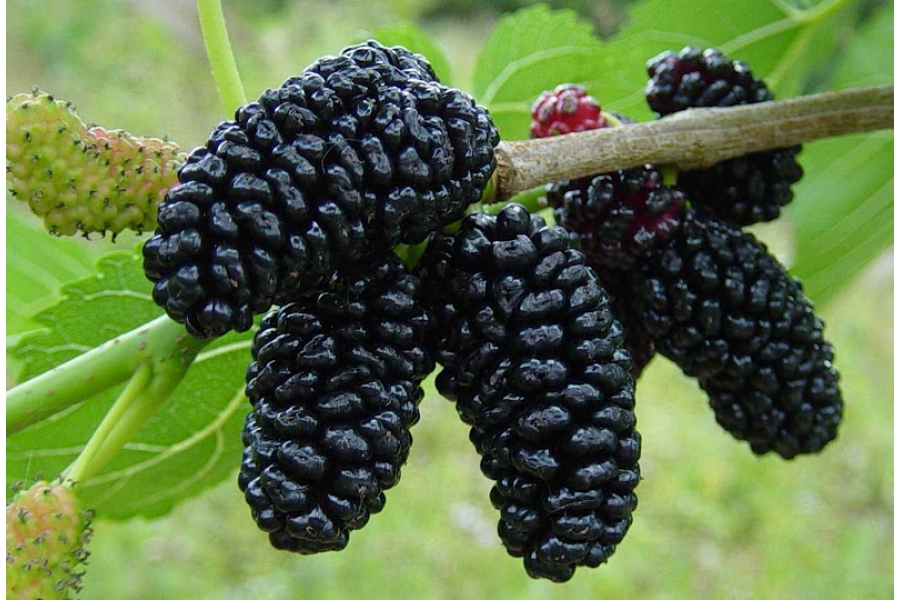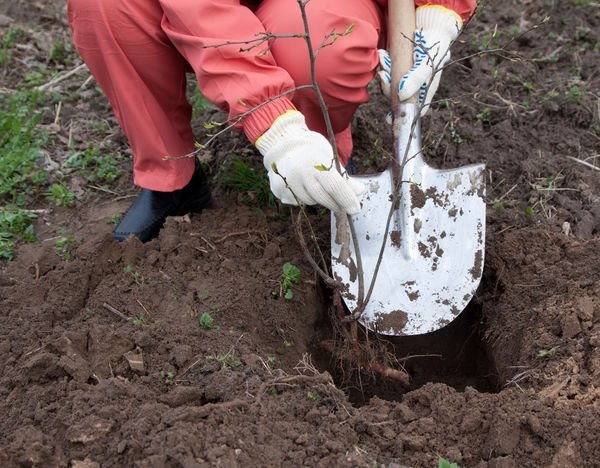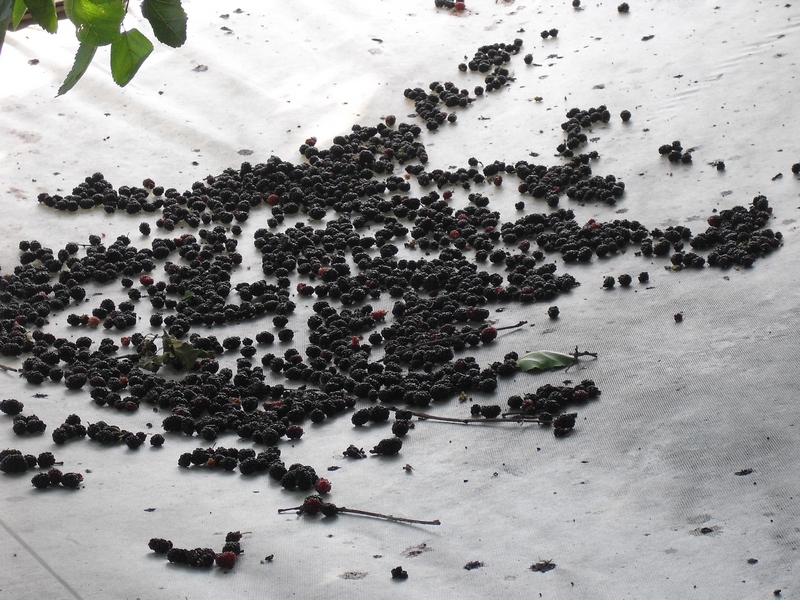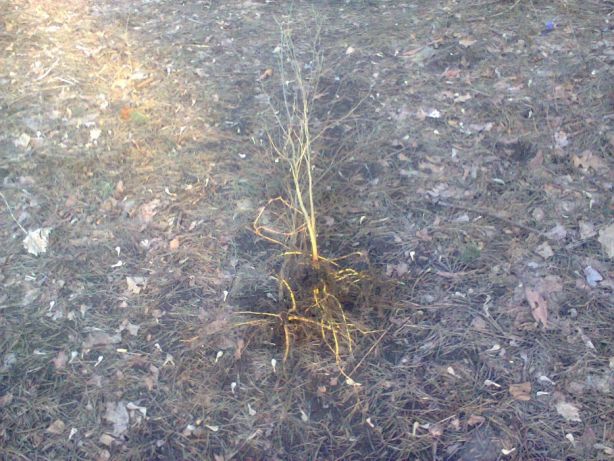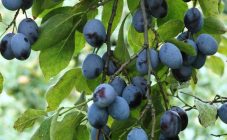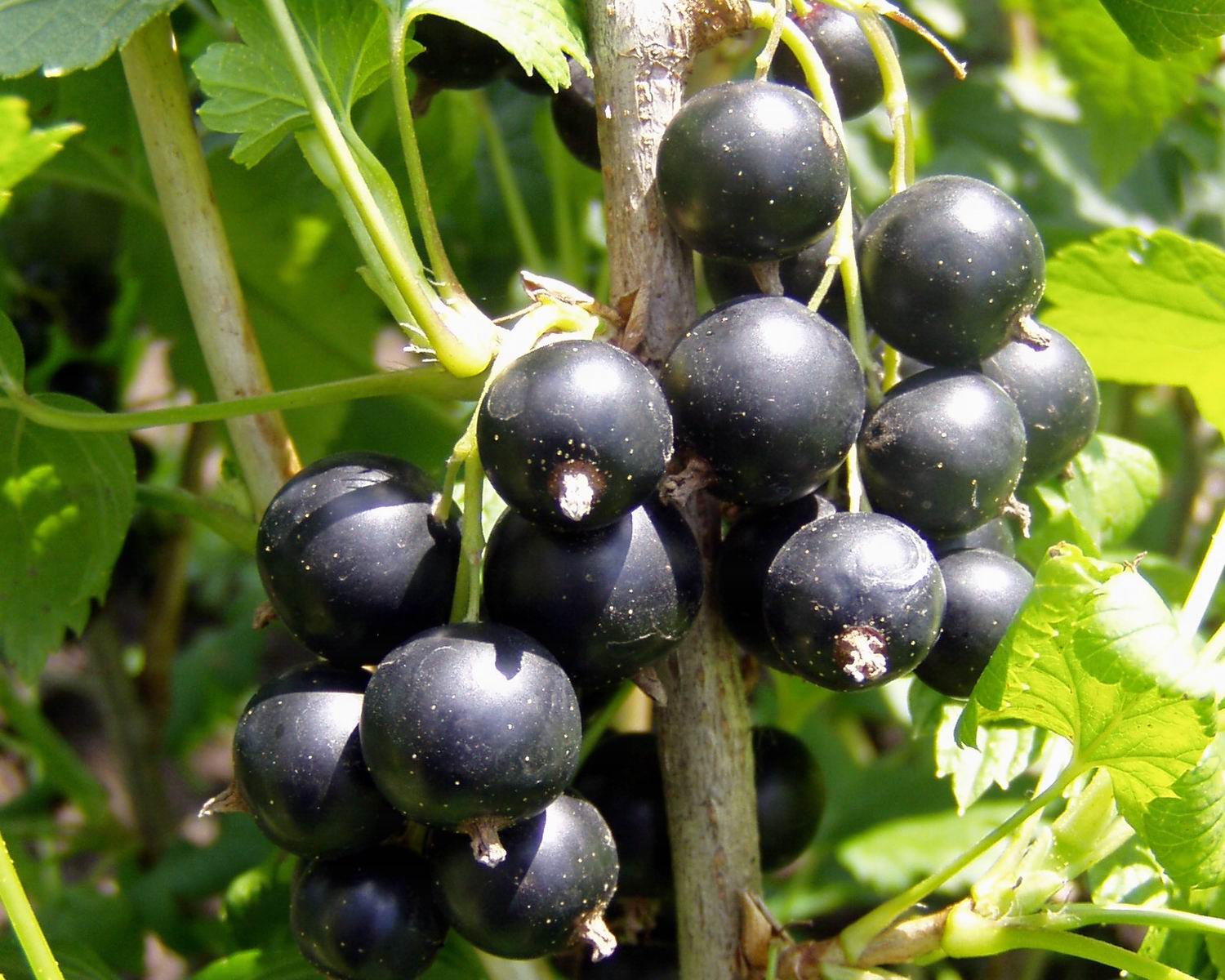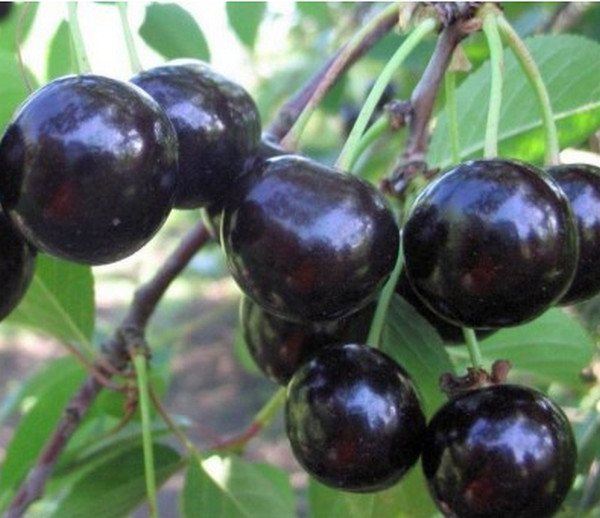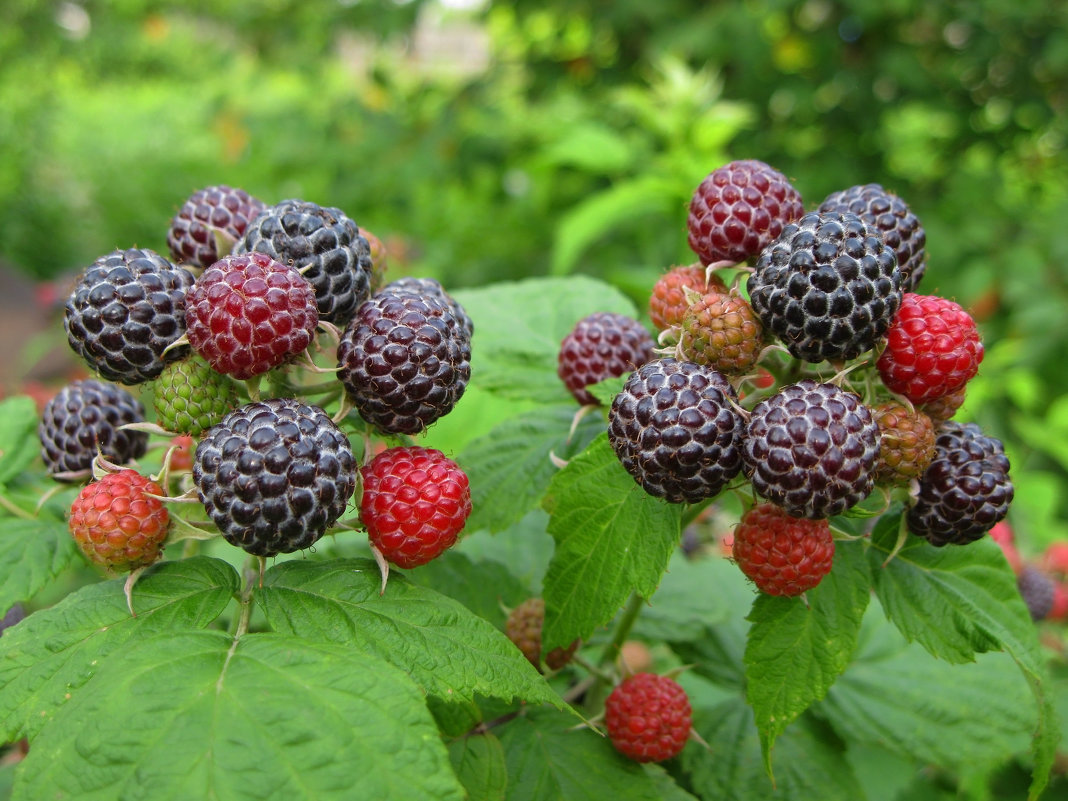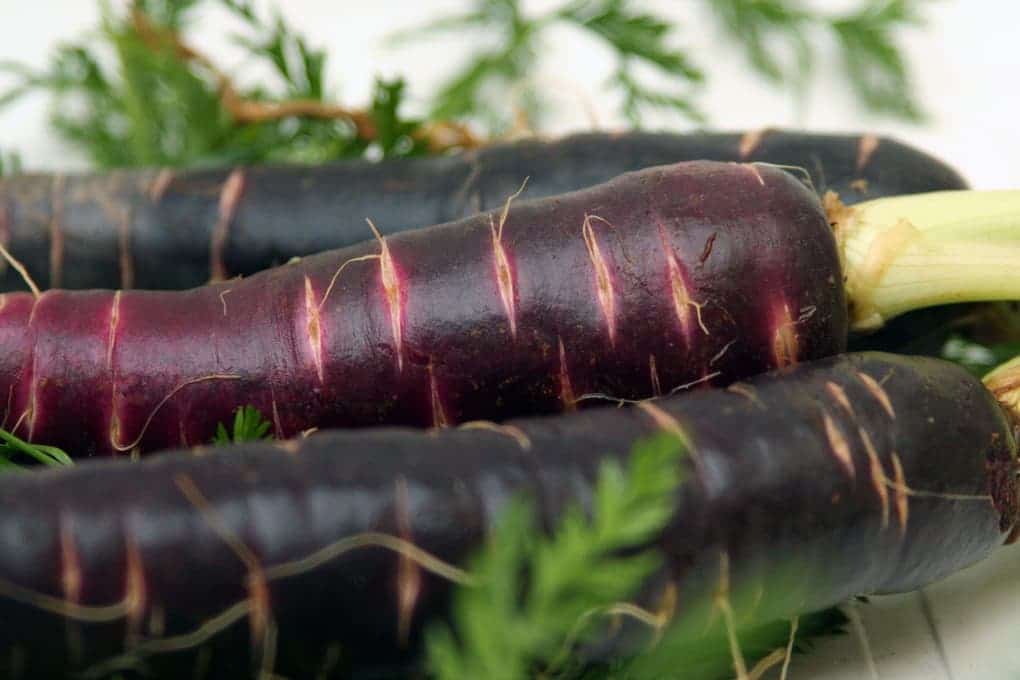Content:
Non-traditional fruit crops with beneficial properties are gaining more and more popularity in Russia. One of these plants is the black weeping mulberry, also known as the mulberry. The culture is especially widespread in the Moscow region and other regions of central Russia.
Description of culture
Black mulberry refers to deciduous trees, reaching a height of 15 m. The plant gains the main growth in the first years of life, later its strength gradually slows down. The crown of the tree is wide and spreading, the bark is brownish in color, and the stems are refined. The leaves are very large, they grow up to 20 cm in length and up to 15 cm in width. They have a lobed shape. The front side of the leaf blade is rough to the touch, the lower part is softened, felt.
The culture blooms in April-May, and already in June, fruits are formed on the tree. The inflorescences are composed of small green-white flowers. The plant begins to bear fruit most often at 3-5 years of age. The harvest is plentiful, is a glossy bright black berries about 3 cm in length. The fruit tastes sweet and sour, very juicy.
Mulberry white and black: differences
White mulberry berries have a slight sourness in taste. They are not as sweet as black mulberries, but at the same time they are less nutritious. White fruits are recognized as a dietary product. The color is not only white, but also yellowish, pink.
There is also a difference in the chemical composition of the fruit. White fruits are high in carbohydrates, while black mulberries have more organic acids.
Black mulberry: growing and care in the Middle lane
To grow mulberries, for example, in the Moscow region, you need to take into account some nuances.
Landing
For planting black mulberries, mid-spring is best suited, when sap flow has not yet begun. Autumn planting, carried out before the rainy period begins, is also widely practiced. In the latter case, you can even get a higher yield, provided that the plant overwinters well.
The area for cultivation of the crop in question should be well exposed to sunlight, but at the same time it needs protection from strong winds. The groundwater should be at a depth of at least 1.5 m. Mulberry can be cultivated on various types of soils, but such types of soils are not suitable for it:
- sandstones;
- swampy dry soils;
- salty.
The planting hole is prepared 2 weeks before disembarkation. Its dimensions must correspond to the dimensions of the root system of the seedling. The approximate length, width and depth of the hole is 50 cm. In soil with a low content of nutrients, the hole is made a little larger, taking into account the application of fertilizers. To do this, use rotted manure in a volume of 5 kg, mixed with 100 g of superphosphate. The resulting nutrient mixture is evenly distributed over the surface of the bottom of the hole and covered with earth so that the roots do not come into contact with the fertilizing during planting.
The seedling is placed inside the planting hole and the roots are straightened so that they do not overlap with each other and do not rest against the edges of the hole. If the plant is too thin, a wooden peg should be driven into the hole with the sharp end down and the seedling should be tied to it with a piece of twine. The hole is covered with soil, constantly ramming it so that there are no empty cavities filled with air. Upon completion of planting, a shallow groove is immediately dug around the seedling, into which 2-3 buckets of warm settled water are poured. You should try to keep this groove for subsequent irrigation. Without wasting time, the near-stem sector is mulched to preserve moisture. For this purpose, peat or sawdust is usually used, but if they are absent, ordinary, but dry soil from the same area will do.
Watering and feeding
Irrigation is very important for the young silk tree. On dry soil, the seedling does not take root. The main watering period is in early to mid-summer. In the spring, it is carried out only during dry periods, and since August inclusive, the plants are not watered at all.
In the first month after planting, the plantings are fed with nitroammophos, and for each plant there is 1 tbsp. a spoonful of fertilizer dissolved in water. In the summer, feeding is repeated according to the same scheme, however, potassium salt and superphosphate are already used. At the beginning of August, the plant is stopped to feed, so as not to provoke the secondary growth of shoots, which will not have time to ripen and with a high degree of probability will die in winter.
Pruning
The formation of the crown of black mulberry is usually carried out during the dormant period - in early spring, when the sap has not yet begun to move. Rejuvenating pruning begins in the last decade of April and ends in May, when the buds begin to bloom. Sanitary pruning is carried out in the fall, when the air temperature has not yet dropped below -10 ° C.
In spring, on a young plant on a trunk, all shoots are removed from a height of about 1.5 m. Thanks to this, in an adult tree, the branches will not bend to the ground. The remaining central conductor is maintained and its height is increased to 5-6 m. You can also form a tree no higher than one and a half meters, which will be easier to care for. On such a plant, 8-10 skeletal shoots are left.
Sanitary pruning involves the removal of dried, sick, killed by frost, with significant mechanical damage to the stems. You also need to get rid of the shoots growing up and in and thus thickening the crown.
Winter care
The black mulberry is characterized by a high level of drought resistance and heat resistance, while the plant practically does not show resistance to unfavorable factors of the winter period. In view of this, the tree must be sufficiently well prepared for the cold weather.
It is necessary to stop adding nutrients in advance. Top dressing is carried out only if the plant shows pronounced signs of fertilizer deficiency. For the same purpose, in August, they refuse further irrigation, and in the autumn they carry out sanitary pruning.
A certain protection from cold to the plant is provided by the ability to form cork tissue in the space between young and mature stems. This allows you to get rid of tissues unsuitable for survival at strong negative temperatures, but in years with snowless winters, plants freeze out. To prevent this, before the beginning of winter, the trunk sector should be mulched and thoroughly covered with spruce branches and other suitable materials.
Reproduction
Like all fruit crops, black mulberry propagates by seed and vegetative methods. In the first case, the seeds need to undergo stratification. The procedure can be carried out both naturally (when the seeds are sown before winter) and artificially. In this case, they are placed in the refrigerator for 2 months in winter. Weekly, the seeds are pulled out for several hours, and a visual inspection is also regularly carried out and diseased or rotten specimens are removed. Immediately before sowing, the seeds are soaked for a couple of hours in a growth stimulant solution. Then they are embedded in the soil to a not too great depth, and then mulched for their early germination. Seedling care is standard.
The above method is relatively simple. Its main disadvantages are as follows:
- elongation during artificial stratification;
- impossibility of reproduction by this method of varietal specimens.
To increase the number of cultivated black mulberry plants, vegetative propagation is used. Its peculiarity is that the plant practically does not reproduce by either green or lignified cuttings - the main varieties of vegetative propagation of fruit crops. Therefore, on the culture in question, propagation by root growth is used. In this case, the seedling is separated from the mother plant and moved to a permanent cultivation site, caring for it like a normal seedling. This method also does not always allow you to transfer varietal characteristics to the offspring. In addition, there is a risk of growing specimens exclusively with male inflorescences (after all, mulberry belongs to the category of monoecious plants).
To ensure the receipt and cultivation of normal varietal plants, either budding or grafting under the bark of the cuttings must be carried out. Budding is carried out in the summer with the help of dormant buds, and in the spring - germinating ones. Grafting is done on a vegetative tree by cuttings with 2 buds under the bark of the tree. On the rootstock, you need to make a cut at an angle of about 35 °, moreover, a straight cut above the bud on the handle, and a beveled one under the bud.
When cultivated in northern regions with a harsh climate (in the Urals, Siberia, in the northwest of Russia), it is recommended to first grow wild black mulberry. It is more resistant to negative temperatures than varietal hybrids. Over time, when the plant gets stronger, it can be used as a rootstock for grafting varietal plants.
Popular varieties
The assortment of black mulberries has several dozen copies, but only a few of them gained the greatest popularity in Russia:
- Black Baroness... A tall variety characterized by increased productivity and resistance to negative temperatures. The fruits are large and sweet, ripen in the first half of summer.
- Shelley No. 150... Highly productive variety of Ukrainian selection. Differs in very large berries (up to 6 cm in length). Taste and commercial qualities and properties are at a high level.
- Black Pearl. The tree grows up to 3.5 m in height. The fruits are about 4 cm long, tasty and sweet. Fruiting begins in June and lasts for 1.5-2 months.
- Nadia... Medium-sized variety with large fruits. The berries are very sweet, black-purple in color, large. The plant bears fruit in the second half of summer. The characteristics of the variety include resistance to diseases and drought.
With the selection of a suitable variety and cultivation technology, you can get a full-fledged high-quality harvest of black mulberry. This culture can be considered one of the most promising in Russia for the next few years, until the breeders develop something else unusual.
